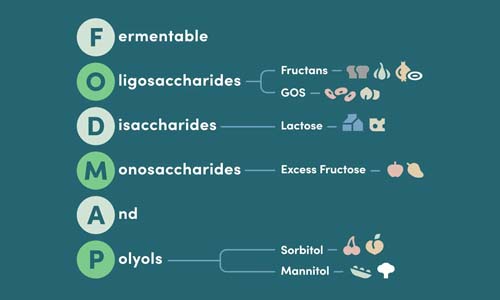How Much Protein Is in Bone Broth? Proven Guide

If you've been sipping bone broth for its health benefits or considering adding it to your routine, you're probably curious about its protein content. As someone who turned to clean-label nutrition after struggling with digestive issues, we understand the importance of knowing exactly what nutrients you're getting from every sip.
Key Takeaways
- Bone broth is often consumed for its health benefits, including its nutrient content.
- Knowing the exact protein content in bone broth is important for those tracking their nutrition.
- The author has personal experience with clean-label nutrition due to digestive issues.
- Understanding the nutrients in bone broth can help you make informed dietary choices.
Table of Contents
- What Makes Bone Broth Different?
- Bone Broth vs. Regular Broth: The Protein Difference
- The Unique Proteins in Bone Broth
- What Determines Bone Broth Protein Content?
- Health Benefits of Bone Broth Protein
- Bone Broth Protein vs. Other Sources
- How to Choose High-Protein Bone Broth
- Maximizing Bone Broth Protein Benefits
- Special Considerations and Safety
- Making Bone Broth Work for You
Bone broth has surged in popularity over the past decade, transforming from a traditional kitchen staple into a modern wellness trend. Walk into any health food store, and you'll find shelves lined with bone broth products promising everything from joint support to gut health benefits. But beyond the marketing claims, the protein content in bone broth is what sets it apart from regular broths and makes it a functional food worth understanding.
Quick Answer
Most high-quality bone broths contain 7-10 grams of protein per cup, primarily from collagen and gelatin extracted during the long simmering process. This protein content is significantly higher than regular broth (2-4 grams) and includes unique amino acids like glycine, proline, and glutamine that support joint health, gut function, and muscle recovery.
What Makes Bone Broth Different?
Before diving into protein specifics, let's clarify what bone broth actually is. True bone broth is made by simmering animal bones and connective tissue for extended periods-typically 12-24 hours or longer. This slow extraction process breaks down collagen into gelatin and releases amino acids that give bone broth its distinctive nutritional profile.
At Gourmend Foods, our chicken and beef products are actually bone broths, not regular broths. We simmer bones with carefully selected low FODMAP ingredients like chive sprigs and leek greens to create depth without digestive discomfort. The result is a shelf-stable broth carton that gels when chilled-a telltale sign of high protein content.
Key Difference: If your broth doesn't gel when refrigerated, it likely has minimal protein content. The gel formation indicates successful collagen extraction.
The extended cooking time distinguishes bone broth from regular broth (made primarily with meat) and stock (made with bones but simmered for shorter periods). This time investment is what transforms tough collagen fibers into easily digestible gelatin and amino acids your body can readily use.
Bone Broth vs. Regular Broth: The Protein Difference

Understanding the distinction between bone broth, regular broth, and stock helps explain why protein content varies so dramatically between products. Many people use these terms interchangeably, but the differences significantly impact nutritional value.
| Type | Main Ingredients | Cooking Time | Protein per Cup | Primary Use |
|---|---|---|---|---|
| Regular Broth | Meat, minimal bones | 1-3 hours | 2-4 grams | Soups, light sipping |
| Stock | Bones, aromatics | 4-8 hours | 4-6 grams | Sauces, cooking base |
| Bone Broth | Bones, connective tissue | 12-24+ hours | 7-10 grams | Drinking, functional nutrition |
The protein in bone broth isn't just about quantity-it's about quality and bioavailability. Unlike plant proteins or even some animal proteins, the collagen-derived proteins in bone broth contain specific amino acid profiles that target joint health, gut lining repair, and muscle recovery.
Based on our experience helping customers with digestive sensitivities, bone broth's gentle protein is often better tolerated than protein powders or supplements, making it an excellent option for those with sensitive stomachs.
The Unique Proteins in Bone Broth
Not all proteins are created equal, and bone broth offers a distinctive amino acid profile you won't find in most other protein sources. The star players include collagen, gelatin, and specific amino acids that work synergistically to support various body functions.
Collagen and Gelatin: These make up the majority of bone broth's protein content. Collagen is the raw form found in bones and connective tissue, while gelatin is what collagen becomes when heated and broken down. This transformation makes the protein more digestible and bioavailable.
The amino acids glycine, proline, and glutamine found abundantly in bone broth support gut lining integrity, joint health, and muscle recovery-benefits you won't get from standard protein powders.
Glycine, in particular, has calming properties that may support better sleep quality, while glutamine serves as fuel for intestinal cells, making bone broth especially valuable for those managing digestive concerns. Proline supports collagen synthesis in your own body, creating a beneficial cycle of tissue repair and maintenance.
This unique amino acid composition is why many of our customers report feeling more satisfied and experiencing better digestion when they incorporate our bone broth into their daily routine, compared to other protein sources that might trigger digestive discomfort.
What Determines Bone Broth Protein Content?

Not all bone broths are created equal when it comes to protein content. Several key factors influence how much protein ends up in your final product, whether you're making it at home or choosing from store shelves.
Animal Type Makes a Difference: Beef bone broth typically contains slightly more protein per cup than chicken, averaging 9-10 grams versus 7-8 grams respectively. This difference comes from the larger, denser bones and more abundant connective tissue in beef. Fish bone broth can be surprisingly protein-rich but requires careful sourcing to avoid heavy metals.
Cooking time is crucial-while regular broth needs only 1-3 hours, true bone broth requires 12-24 hours to fully extract collagen and convert it to bioavailable gelatin.
The bone-to-water ratio significantly impacts protein concentration. Too much water dilutes the final product, while too little prevents proper extraction. Professional producers like us at Gourmend carefully calibrate this ratio to maximize both protein content and flavor without compromising digestibility.
Adding acid (like apple cider vinegar) during the initial stages helps break down bone matrix, releasing more minerals and proteins. The type of bones matters too-knuckle bones, marrow bones, and feet contain more collagen than purely meaty bones, resulting in higher protein yields.
Health Benefits of Bone Broth Protein
The protein in bone broth offers unique health advantages that standard protein sources can't match. Based on our experience helping customers with digestive sensitivities, these benefits go far beyond basic nutrition.
Joint Health Support: The collagen and gelatin in bone broth provide building blocks for cartilage repair and maintenance. Research suggests that regular consumption may help reduce joint pain and improve mobility, particularly beneficial for active individuals or those with arthritis concerns.
Bone Broth Protein Advantages
- Highly bioavailable amino acids for better absorption
- Gentle on digestive system, ideal for sensitive stomachs
- Contains glycine for improved sleep quality
- Supports gut lining integrity with glutamine
Considerations
- Lower total protein than isolated protein powders
- Not a complete protein source on its own
- Quality varies significantly between brands
- Higher sodium content in some commercial versions
Gut Health and Digestion: The glutamine content in bone broth serves as fuel for intestinal cells, supporting gut lining repair and reducing inflammation. Many of our customers report improved digestion and reduced bloating when incorporating bone broth into their low FODMAP routine.
The glycine in bone broth has calming properties that may improve sleep quality and reduce stress response. Unlike stimulating protein powders, bone broth's amino acid profile promotes relaxation rather than energy spikes, making it ideal for evening consumption.
For those managing digestive issues, bone broth protein is often better tolerated than whey or plant-based protein powders, providing essential amino acids without triggering symptoms.
Bone Broth Protein vs. Other Sources

Understanding how bone broth stacks up against other protein sources helps you make informed decisions about incorporating it into your nutrition routine. While it may not compete with protein powders in terms of raw numbers, its unique benefits tell a different story.
| Protein Source | Protein per Serving | Key Benefits | Best For |
|---|---|---|---|
| Bone Broth (1 cup) | 7-10 grams | Joint support, gut health, easy digestion | Daily wellness, digestive support |
| Whey Protein (1 scoop) | 20-25 grams | Complete amino profile, quick absorption | Post-workout recovery |
| Plant Protein (1 scoop) | 15-20 grams | Vegan-friendly, fiber content | Plant-based diets |
| Regular Broth (1 cup) | 2-4 grams | Hydration, low calorie | Cooking base, light meals |
The real advantage of bone broth protein lies in its functional benefits rather than quantity alone. While protein powders excel at muscle building, bone broth provides targeted support for joints, gut health, and overall wellness that you can't get from isolated proteins.
Quality Indicator: High-quality bone broth should gel when refrigerated. This gelification indicates successful collagen extraction and higher protein content.
For those following specialized diets, bone broth offers advantages over other protein sources. Our low FODMAP bone broths provide clean protein without triggering digestive symptoms, something many protein powders and supplements can't claim. The gentle nature of bone broth protein makes it suitable for people with sensitive stomachs, food allergies, or those recovering from illness.
Consider bone broth as a complementary protein source rather than a replacement for all others. Its unique amino acid profile fills nutritional gaps that standard protein sources miss, particularly for joint health, gut function, and sleep quality support. For more on digestive-friendly eating, explore our learn section.
How to Choose High-Protein Bone Broth
When shopping for bone broth, the nutrition label tells only part of the story. Understanding what to look for ensures you're getting maximum protein value and quality for your investment.
Look for bone broths that gel when refrigerated-this indicates successful collagen extraction and higher protein content. If it stays liquid, it's likely regular broth with minimal protein benefits.
Reading Labels Effectively: Don't just focus on the protein number. Check the ingredient list for bones, connective tissue, and minimal additives. Quality bone broths should list bones as the first ingredient, not meat or vegetables. At Gourmend, our bone broths (both chicken and beef varieties) prioritize bones and connective tissue to maximize protein extraction.
Avoid products with excessive sodium, artificial flavors, or unnecessary thickeners. These additions often mask poor protein content and can trigger digestive issues for sensitive individuals. Our shelf-stable broth cartons maintain clean labels while delivering consistent protein levels of 8-10 grams per cup.
Quality Indicators: Premium bone broths typically contain 8+ grams of protein per cup, gel when cold, and have minimal ingredients focused on bones and natural seasonings.
Liquid vs. Powder vs. Concentrate: Liquid bone broth offers the most authentic nutrition profile and is gentlest on digestion. Powdered versions often contain additives and may not provide the same collagen benefits. Concentrates can be convenient but check that they're not diluted beyond nutritional effectiveness.
For those managing digestive sensitivities, choose bone broths specifically formulated to be low FODMAP. These avoid high-FODMAP ingredients like garlic bulbs and onions while maintaining rich flavor through alternatives like chive sprigs and green leek tops.
Maximizing Bone Broth Protein Benefits
Getting the most from bone broth protein requires strategic timing and preparation methods. Based on feedback from Gourmend customers, these approaches optimize both absorption and health benefits.
Optimal Timing: Consume bone broth between meals or as a light evening snack to maximize amino acid absorption. The glycine content promotes relaxation, making it ideal for 1-2 hours before bedtime. Avoid drinking large quantities with meals, as this can dilute digestive enzymes.
Best Practices
- Warm gently to preserve protein structure
- Pair with vitamin C-rich foods for collagen synthesis
- Consume regularly for cumulative benefits
- Start with small amounts if you have sensitive digestion
Common Mistakes
- Boiling vigorously, which breaks down proteins
- Adding high-FODMAP ingredients that trigger symptoms
- Expecting immediate results-benefits build over time
- Using as sole protein source without variety
Enhancement Strategies: Add a splash of lemon juice or apple cider vinegar to enhance mineral absorption. Include low FODMAP herbs like chives or parsley for additional nutrients without digestive stress. For those following elimination diets, bone broth serves as a safe protein source during healing phases. For inspiration, check out our low FODMAP braised short ribs recipe.
Store-bought options like our Gourmend shelf-stable broth cartons offer convenience without compromising quality. They're shelf-stable until opened, making them perfect for consistent daily consumption or recipe enhancement.
Consistency matters more than quantity. A cup of quality bone broth daily provides more cumulative benefits than sporadic large servings.
Special Considerations and Safety
While bone broth protein offers numerous benefits, certain individuals should approach consumption thoughtfully or consult healthcare providers before making it a dietary staple.
Who Should Exercise Caution: People with kidney disease should monitor protein intake carefully, as excessive protein can strain compromised kidney function. Those with histamine intolerance may react to long-simmered bone broths, though this varies individually.
Lead contamination has been a concern with some commercial bone broths, particularly those using bones from unknown sources. Choose reputable brands that test for heavy metals and source bones from grass-fed, organic animals when possible. For more on this topic, see this external resource.
Medication Interactions: Bone broth's high mineral content may affect absorption of certain medications, particularly antibiotics and thyroid medications. Space consumption at least 2 hours from medication timing.
For Plant-Based Diets: While traditional bone broth isn't suitable for vegetarians, you can achieve similar gut-health benefits through plant-based alternatives. Consider mushroom broths with added collagen peptides, or focus on amino acid-rich plant proteins like hemp seeds and quinoa.
Quality control matters significantly with bone broth. Choose brands that provide transparency about sourcing, testing, and production methods. At Gourmend Foods, we prioritize clean sourcing and rigorous testing to ensure both safety and nutritional integrity in our bone broth products. For scientific research on bone broth, refer to this external resource.
Making Bone Broth Work for You
Bone broth protein offers unique advantages that complement traditional protein sources rather than replacing them entirely. With 7-10 grams of highly bioavailable protein per cup, plus joint-supporting collagen and gut-healing amino acids, it fills specific nutritional gaps that other proteins miss.
The key to success lies in choosing quality products and consuming them consistently. Whether you're managing digestive sensitivities, supporting joint health, or simply seeking a gentle protein source, bone broth can be a valuable addition to your wellness routine.
For those with dietary restrictions or digestive concerns, bone broth provides a safe, well-tolerated protein option that supports rather than stresses your system. The gentle nature of bone broth protein makes it particularly valuable for people following elimination diets or managing conditions like IBS.
Bottom Line: Bone broth protein excels in quality over quantity, offering functional benefits for joint health, digestion, and overall wellness that standard protein sources can't match. Choose wisely, consume consistently, and view it as part of a diverse protein strategy.
Remember that the best bone broth is one you'll actually consume regularly. Whether that's a convenient shelf-stable option like our Gourmend varieties or homemade versions, consistency trumps perfection when it comes to realizing bone broth's protein benefits.





